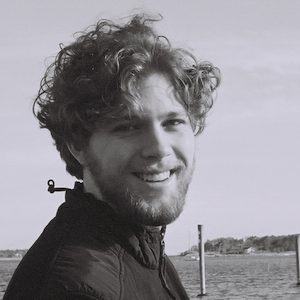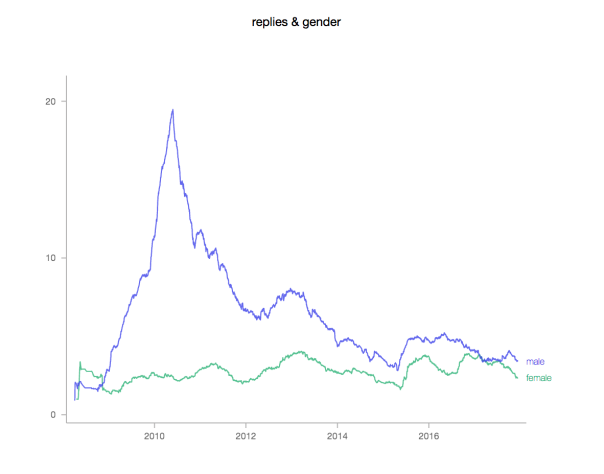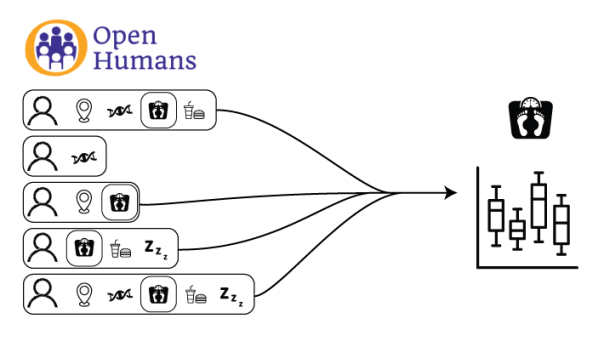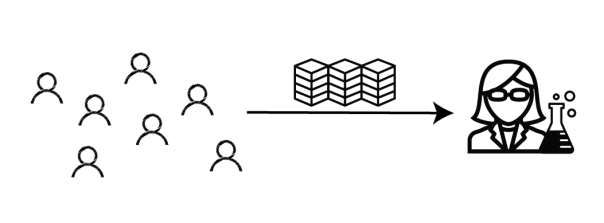
Today we’re interviewing Benjamin Carr. He is not only a long-term member of the Open Humans community, but also the recipient of two(!) of our Project Grants.
His two – closely related – projects are the integration of both Google Fit and Microsoft Healthvault into the Open Humans Network.
Benjamin, please give our blog readers a quick introduction about who you are!
I originally became aware of the Personal Genome Project, way way back at its dawn in 2005 while I was working at Woods Hole Oceanographic Institution in Physical Oceanography. The idea to a young scientist that PGP was basically providing seed money to make human DNA sequencing affordable was amazing, and I was quick to sign up, and encourage my whole family to join as well. For those that don’t know, becoming a PGP volunteer was a multi-year process requiring a multitude of questionnaires. I didn’t receive my tubes to spit into until 2012! I attended a couple of the GET conferences in Cambridge, MA when I was across the river working on my PhD in Biology at Boston University. My science and technology passions found an excellent intersection with Open Humans.
You have been a part of the Open Humans community for a long time. How did you initially come to Open Humans?
I’m not sure of the exact date, but it was shortly after launch in 2015 that I joined Open Humans. Most likely due to an email blast from Madeleine Ball to the PGP group. I quickly linked up as much data as I had available at the time, and made things like Wildlife of Our Homes public. Furthermore, I am one of just 26 People to admit that we owned a “Jawbone Fitness tracker,” an early step counter and Fitbit competitor.
Between trying to spur communications on the forum and Slack channel, submitting issues and pull requests for the website itself and individual projects, I’ve banged my head against most things Open Humans, save the legal bits.
You volunteer for Open Humans, what are your responsibilities and how did you end up in that role?
Like all of us I volunteer data. But I also help to edit mailings and postings that go out in email blasts and on the blog. I report issues on Github and Slack. I try to help new users and developers when I can and do a bit of coding for different parts of the system myself, and keeping an eye out for bugs and vulnerabilities. I also started managing the Facebook Page in March.
Open Humans is looking for more than just data, programmers, and scientists, the idea is to make lots of information “open”. Having had some experience and the resources to manage a social media system and strategy my offer to try to make the Facebook Community more vibrant was welcomed with open arms. Hopefully you’ve noticed the steady stream of what I hope are interesting links and stories on our Facebook Page.
If you have any ideas for content or want to host something like a Reddit AMA on our Facebook drop me a line! I am always looking for new exciting things to share. Being a scientist myself, I am actually running a Facebook experiment. I started posting over the weekend, and Sunday posts seem like a winner for interaction with our Facebook fans! I’m also trying to see if changing the timing of the posts inspires more people to like, share or comment. We’ll see!
Open Humans could always use help making things more accessible. We try our best to make each piece understandable to a wide audience, but just having volunteers review the documentation and explanations of projects and goals would be welcomed!.
You did not only get one Open Humans project grant, but two. What are these two projects you have planned?
The first as you mentioned is to incorporate Google Fit data into the Open Humans platform. Google Fit ships with every Android phone that uses the Google Apps, which means as of this interview there are more than 2.6 Billion active Android phones. While Fit natively tracks things like steps and stairs, there is an entire ecosystem of products that plug into it, like Running, Biking, and even Push Up Apps! As well as many devices from glucose meters for diabetics to blood pressure cuffs, and even CPAP machines for people with sleep apnea! The second project has some overlap with the devices supported, but MS HealthVault is really a repository for millions of people to keep track of medical records, MRI images, XRays, Prescriptions, and even directly link Electronic Health Records!
Your two projects sound a bit related. How did you get the idea for them? Are you using these services yourself?
The two are related, honestly the Google Fit seemed like a logical integration I just hadn’t had time to work on it, the Healthvault occurred to be during a discussion with you on Slack about openSNP and pulling that data into Open Humans. By my using the APIs (Application programming interfaces) provided by Google and Microsoft I can allow participants to share data collected in these two “silos” with the Open Humans community and researchers. By adding these two integrations I hope to increase the appeal for researchers to look at and use the Open Humans datasets, as we have years, and in some cases in MS HealthVault, decades of data that can be accessed along with genetic sequences from those that have provided it it from services using microarrays or chips like 23andMe and Ancestry, or full genome sequences!
When I’m done with the grant work, the code should be self updating, or offer the ability for users to request data be pulled in at the push of a button. I do use both MS HealthVault and Google Fit, both directly and with attached devices and services. I started using MS HealthVault when Google Health closed, and I migrated all of the data I had put into Google Health for PGP from Google to the Microsoft platform. I’m also a long time Google Phone user, these two facts makes coding for both APIs easier as I have a ton of data in each of the respective warehouses.
Is there anything important that we didn’t cover so far that you’d like to add?
I have seen how genomics can play a huge part in one’s life. I am very open with my doctors about being lucky enough to have a sequenced genome. By being able to do a little bit of my own research and ‘checking my genome for Z’ based on doctor’s suggestions, symptoms that previously eluded diagnosis started to line up. I also lost my first wife to Ovarian Cancer that was accelerated – if not actually caused – by a family history of Prostate Cancer, something we wouldn’t know until after she had passed.
On the lighter side I’m an avid photographer, and when I was doing my PhD work in Boston went to the woods nearly every weekend, to clear my head, rejuvenate my soul, throw a tennis ball for my labrador retriever, and rack up a very high shutter count on my old DSLR. I took this picture of the first of three upcoming “Supermoons” a couple weekends ago.

I am also an environmentalist. My background spans fisheries and oceanography, but also the hereditary traits passed on from mother to offspring of Walleye fish, the biocomplexity and interconnectedness of the Great Lakes.I was one of the four man crew who did the 9/11 impact assessment of the Hudson River Estuary from the George Washington Bridge to the Battery! I’ve been Chief Scientist on multiple cruises including working from small boats to large 115 ft, 200 ton vessels! Even though my first cruise in 1999 was one of the worst weather-wise (it was so bad the glass in the windows shattered), I still have an undying love for the oceans, being on the water or just being near it.








